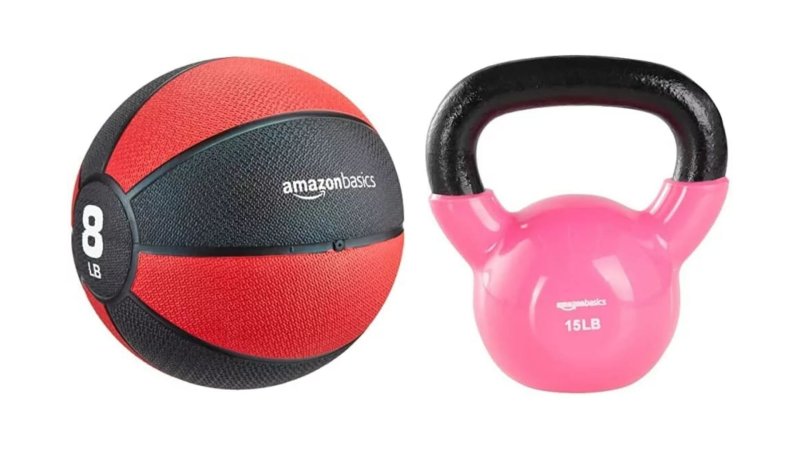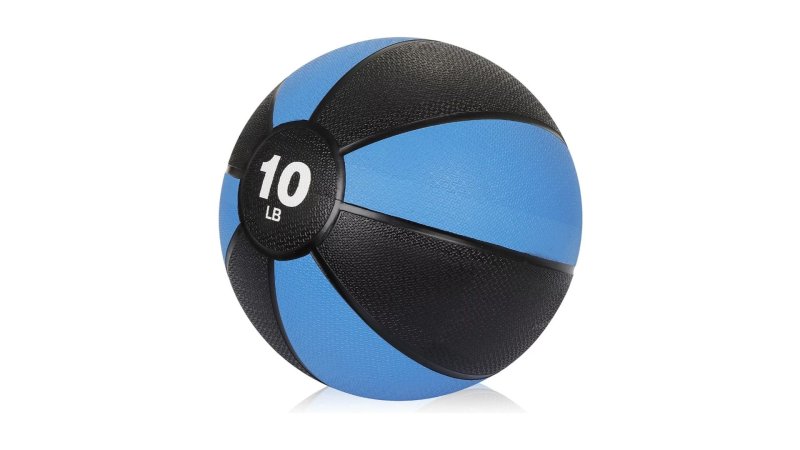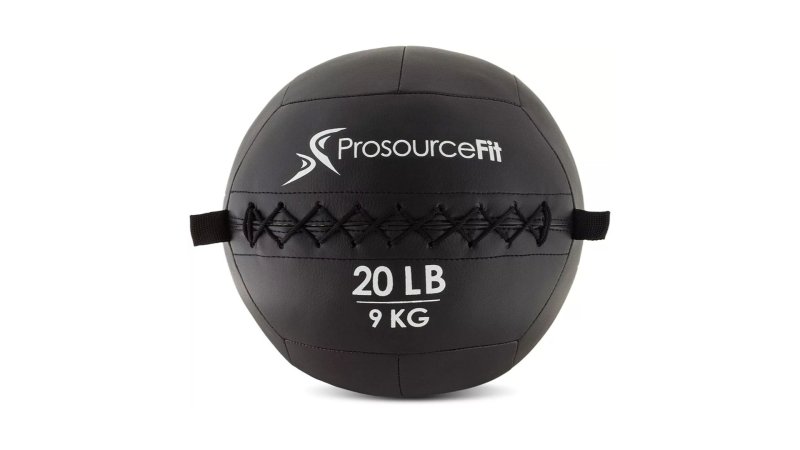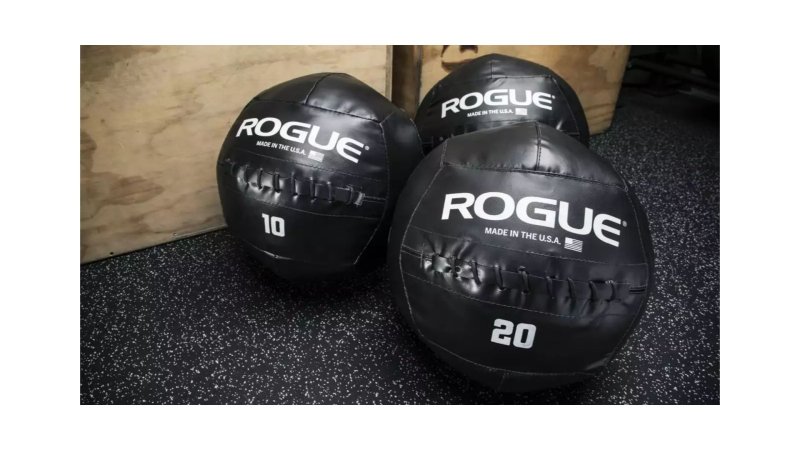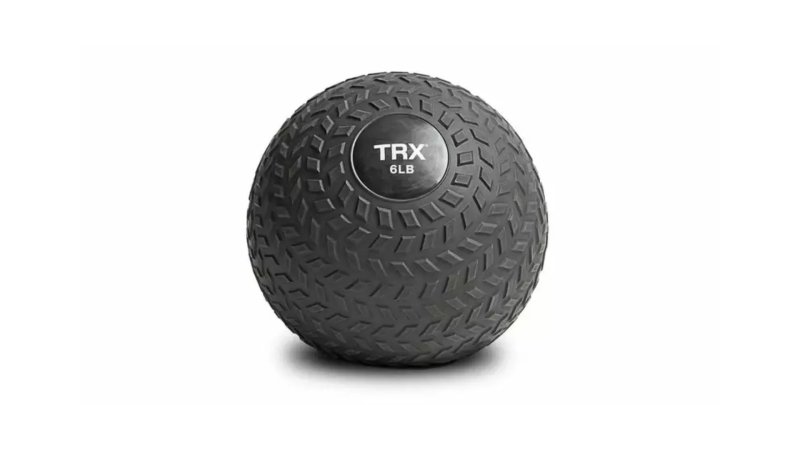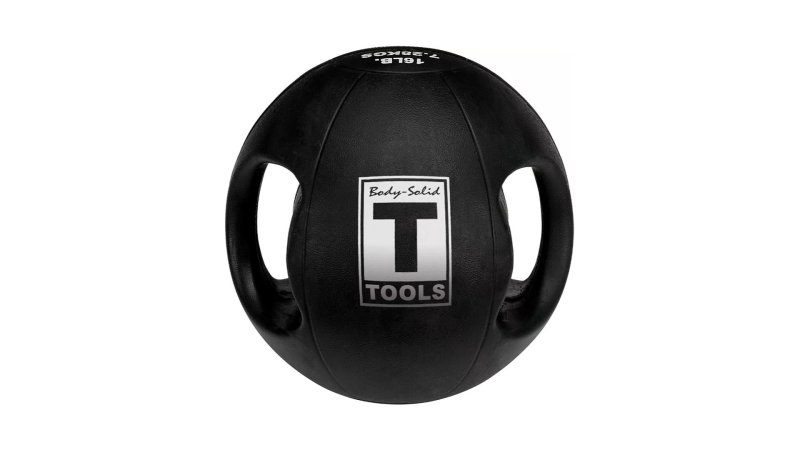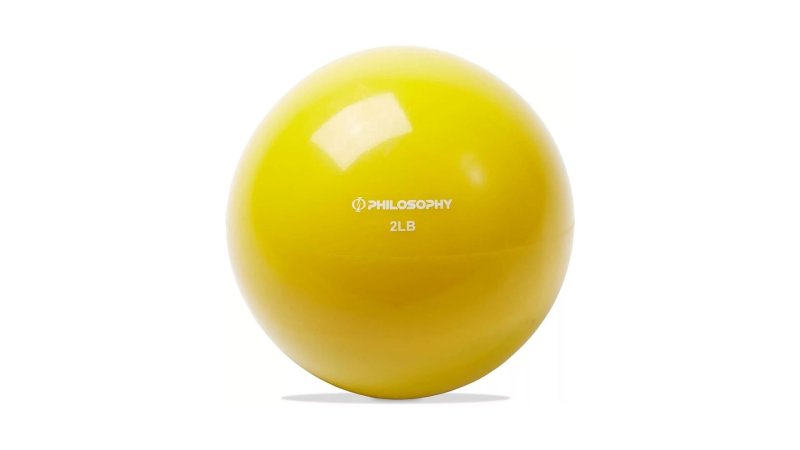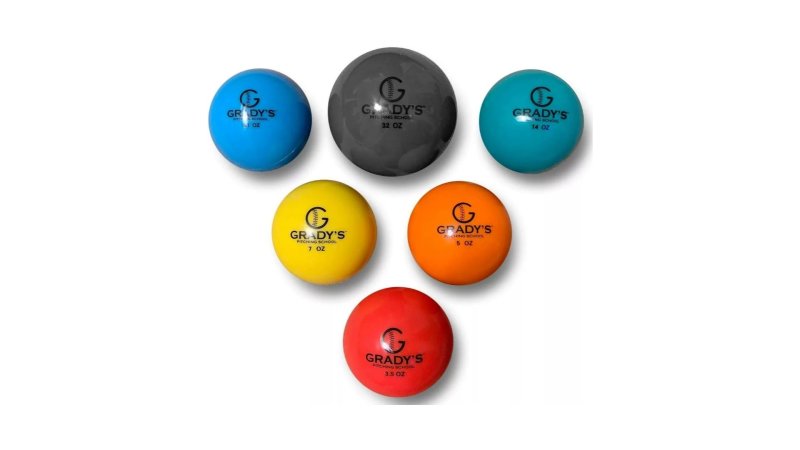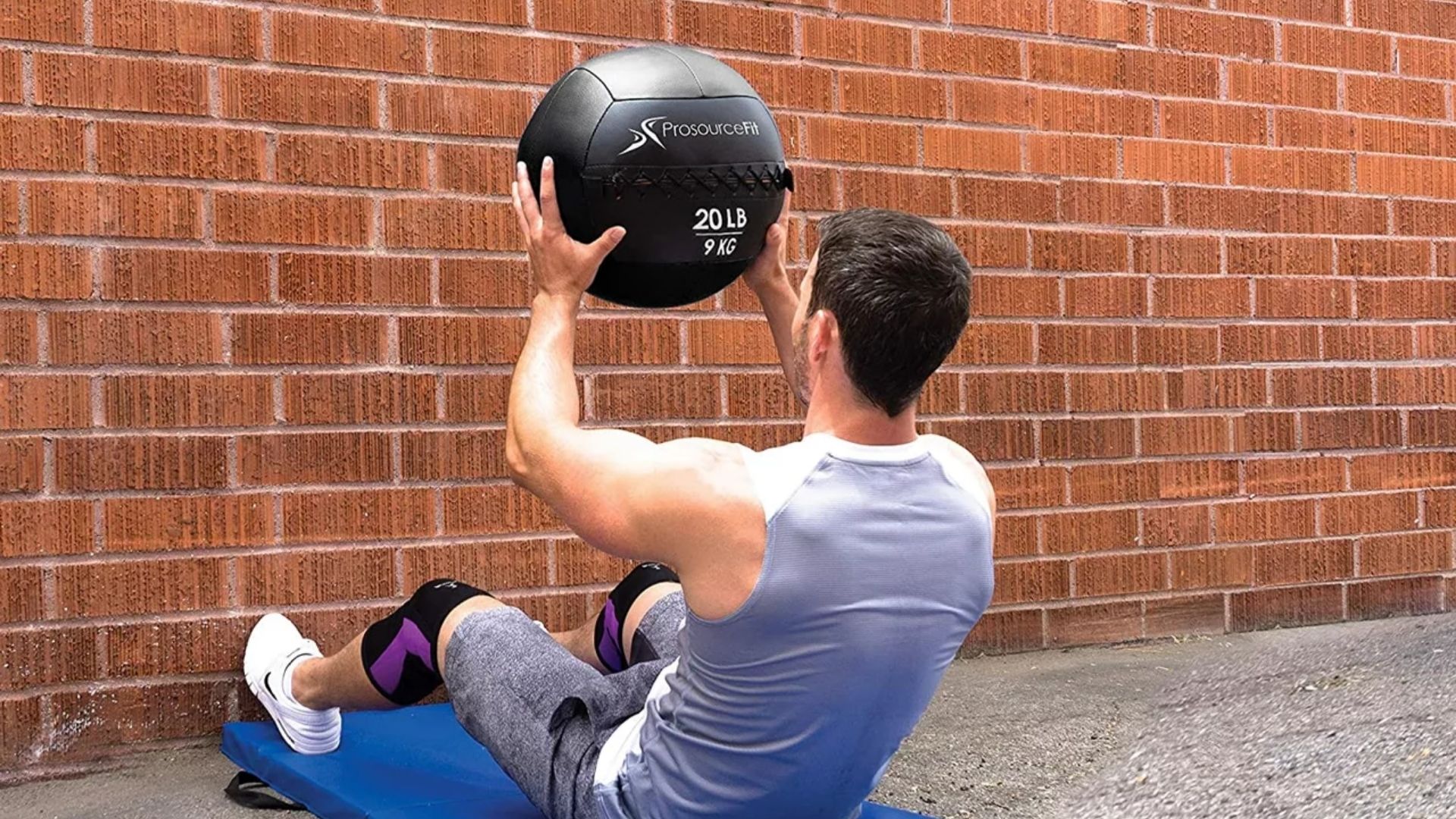

We may earn revenue from the products available on this page and participate in affiliate programs.
Never underestimate the gains to be had with a medicine ball. Who knew something as simple as a literal ball could help you take your exercise routine to the next level? Slam them. Throw them. Knock out a few dozen ab twists with them. I bet a few of you didn’t even know that they made medicine balls specifically to train baseball and softball players, myself included. The online marketplace is brimming with medicine balls for your at-home gym, but it can be a bit confusing to decipher the differences between each product to find the right product for you. Allow us to help.
Enter the Task & Purpose buyer’s guide to the best medicine balls on the market today. From the bare basics to the more niche swole spheres, we’ve got you covered for whatever your routine may need. We’ve combined our reserves of knowledge with extensive research to curate this guide for you, so scroll on through and happy shopping.
- Best Overall: Amazon Basics Medicine Ball
- Best Value: F2C Medicine Ball
- Honorable Mention: ProsourceFit Soft Medicine Balls
- Best Soft-Touch: Rogue Medicine Balls
- Best for Slamming: TRX Slam Ball
- Best to Grip: Body-Solid Dual Grip Medicine Ball
- Best for Seniors: Philosophy Gym Toning Ball
- Best for Arm Training: Plyo Soft Shell Weighted Ball Set
Methodology
As journalists who’ve made fitness a staple throughout most of our military careers, the Task & Purpose staff always strive to deliver the most informative yet honest reviews in every buyer’s guide we curate. From kettlebells to resistance bands and pull-up bars, we always make sure you’re eyeing the right products. I’ve personally enjoyed throwing medicine balls into my circuits and have used enough to know what’s hot and what’s not.
The products gathered on this list were assessed purely on research from what real-life people have experienced with each one, answering things such as, “How can they be used in a variety of workouts? Are they nice to grip and easy to hold or catch? Are they lifetime equipment, or do they fall apart after a few uses?”
Retail giants such as Amazon are invaluable resources for such information and have helped us find genuinely good products via customer input. But a quick Google search also reveals unique, alluring buys that we were hard-fetched to find outside of manufacturer sites, and we couldn’t ignore them. Companies such as Rogue Fitness and TRX Training, have provided great insight into their own products via their customers’ input. Products with little-to-no consumer feedback were usually ignored as we lean heavily towards items that can back their claims with real-world experience.
As always, readers are always welcome to learn more about how we curate our buyer’s guides.
Best Overall
Amazon Basics Medicine Ball
Pros
- Can be bundled with other equipment
- Agreeable price across all bundles
- Compact size for easier handling
Cons
- Only available up to 20 pounds
Product Specs
- Material: Vinyl
- Weight range: 6 to 20 pounds
- Diameter: 9 inches
Best Value
F2C Medicine Ball
Pros
- Value as strong as the athletes who train with it
- Textured, basketball-like surface aids grip
- Good for bouncing
Cons
- Unavailable in heftier weights
- Definitely not for slams
Product Specs
- Material: Rubber
- Weight range: 6 to 12 pounds
- Diameter: Not disclosed
Honorable Mention
ProsourceFit Soft Medicine Balls
Pros
- Soft-touch surface
- Simplistic design means high versatility
- Tough synthetic leather material
Cons
- Only available up to 20 pounds
- Reports of unevenly packed weight
Product Specs
- Material: Synthetic leather
- Weight range: 6 to 20 pounds
- Diameter: 14 inches
Best Soft-Touch
Rogue Medicine Balls
Pros
- Broad weight range
- Moisture and scuff resistance
- Heavier weights are double-stitched for added strength
Cons
- A price tag to wince at
- Specifically advised against slamming
- Medicine ball to dodgeball with one bad throw
Product Specs
- Material: Vinyl
- Weight range: 4 to 30 pounds
- Diameter: 14 inches
Best for Slamming
TRX Slam Ball
Pros
- Broad weight range, especially when bought from manufacturer
- Filled with sand to retain shape
- Textured exterior for sturdy grip
Cons
- Can get a bit pricey
- A few reports of sand leaking out
Product Specs
- Material: Rubber
- Weight range: 6 to 50 pounds
- Diameter: 10 inches
Best to Grip
Body-Solid Dual Grip Medicine Ball
Pros
- Handles for one- or two-handed gripping
- Soft-touch handles for sturdy grip
- Greatly increased versatility
Cons
- Only available up to 20 pounds
- Reports of being shipped coated with a film of oil
- Gets expensive quick
Product Specs
- Material: Rubber
- Weight range: 6 to 20 pounds
- Diameter: 11 inches
Best for Seniors
Philosophy Gym Toning Ball
Pros
- Perfect for elderly or physical therapy
- Broad range of diameters for the right grip
- Tailored for “softer” exercises
Cons
- Definitely not for heavy-weight extremists
- Reports of strange film on the surface
Product Specs
- Material: Soft PVC
- Weight range: 2 to 8 pounds
- Diameter: 4.5 to 8.2 inches
Best for Arm Training
Plyo Soft Shell Weighted Ball Set
Pros
- Sold in a set of six
- Perfect for athlete training or physical therapy
- Carrying case included with sale
- Can be inflated as needed
Cons
- Slippery texture
- Reports of slight deformities upon delivery
- Individual replacement balls reportedly unavailable
Product Specs
- Material: Rubber
- Weight range: 0.2 to 2 pounds
- Diameter: 3 inches
Our verdict on medicine balls
The Amazon Basics Medicine Ball is a top earner for its versatile appeal, inoffensive pricing, and versatile package deals. The F2C Medicine Ball does a mirror-like impersonation at a discounted price. And, the ProsourceFit Soft Medicine Ball adds some extra durability for more intense regiments.
What to consider when buying medicine balls
As it would seem, there’s actually quite an assortment of medicine balls to choose from, depending on your preferred workout methods. Would you like something easygoing and soft for gentle exercises, or do you shred in spite, throwing and slamming equipment in Bang-fueled ragers? There are different medicine balls for different purposes, each with varying levels of feel, weight ranges, sizes, and resiliency. Here are some ways through which a medicine ball can distinguish itself.
Types of medicine balls
Wall ball
A step above a basic rubber medicine ball, these will be a little more robust and pack on some added weight for athletes with a little more verve. These products may often trade rubber exteriors for leather, vinyl, or some soft synthetic material. They won’t bounce, but they will be soft-touch and structured in a way where they can withstand the impact of hitting walls or being thrown and caught. The Prosource Fit and Rogue medicine balls qualify as wall balls.
These will often be a tad larger than normal medicine balls, wider by at least a couple of inches or more, and they’ll be available in heavier weights. Think of maximum weights topping out at 30 to 40 pounds versus 20 to 30 for most regular medicine balls you can buy online.
Toning
Going in the opposite direction of a wall ball, toning balls will be lighter, smaller, and focused on softer workouts. This makes them perfect for seniors or physical therapy patients; think less like CrossFit and more like yoga. These will often be soft-touch rubbers for plush, cushy impacts and are simply made to add resistance to less strenuous routines. As we’ve learned, some are even tailored for baseball and softball applications to tone throwing arms and sharpen reflexes.
Weights will often be the lowest, maxing out at eight to 10 pounds for some toning balls. Diameters will often be compact enough to make gripping a thoughtless affair, and some baseball and softball-centric variants will be sized and weighted to mimic.
Slam
The most aggressive and robust of medicine balls, think of slam balls as ‘roided up wall balls. Their exteriors are tougher and their maximum weights are heavier. Some can reach up to 50 pounds, perfect for intense strength training and the act of lifting overhead and slamming down. They’ll be on the larger side, not unlike a wall ball, and they’ll be structured with a soft-ish touch to distribute their force better as they make an impact.
To achieve their goals, they’ll often be packed with sand as their weight and have no rebound at all. Call it a safety feature. You wouldn’t want a 50-pound sphere ping-ponging across the living room. Their grippy surfaces mean that they can still be used for normal exercises, as well. You’ll just have the added benefits of their resiliency.
Key features of a medicine ball
Exterior surface
What’s it made of, and how are they designed? Most basic medicine balls will be made of some textured rubber for strength and grip. The best ones will have noticeably textured surfaces for less slippage. Of course, that changes as you switch up niches.
Wall balls may be constructed of vinyl, leather, or stronger synthetic materials to withstand their greater impacts. Slam balls will be constructed of thick rubbers with extremely textured surfaces for tight holds and to withstand being thrown from overhead without exploding sand all over the place. Toning balls will be especially soft-to-the-touch with a slick rubber surface like that of a yoga ball.
Weighting
How heavy is it? Of course, how heavy you want your medicine ball depends on your strength and use case. Lighter workouts that call for a pinch of resistance may benefit from smaller, lighter medicine balls or even toning balls such as those from Philosophy Gym. High-intensity or bodybuilding types will require that you lean into heavier weights from 20 pounds and up.
Wall balls and slam balls will be available in heavier weights given their uses in more stringent and strenuous routines. Some slam balls can even reach as high as 50 pounds, heavier than most dumbbells on the racks at gyms. Toning balls, being intended specifically for light workouts such as yoga or physical therapy, will be the lightest with the lowest weight tipping the scales at mere ounces.
Equipment bundles
Who doesn’t love a good deal? On the online marketplace, there are a ton of bundle deals to be had, especially with exercise equipment. Some medicine balls come sold as a set or can be paired with other items such as the Amazon Basics products. In their case, you can choose whichever weight medicine ball you want plus have the option of adding a dumbbell or kettlebell to the mix.
Do keep in mind that this mainly applies to the less-expensive pickings off Amazon’s catalog. Don’t expect premium products such as Rogue or TRX to offer much in the way of package deals when shopping for medicine balls.
Pricing for medicine balls
Most medicine balls will ring in well under $100 for most lower-end or mid-tier products, especially basic medicine balls such as the Amazon Basics and F2C. Such products will start above $20, with the heaviest Amazon Basics currently available costing over $50. Equipment bundles will raise it into the $70 range. A premium slam ball from TRX ranges from $30 to $85 depending on weight, while Rogue’s wall ball ranges from $75 to $133. Our Best Value pick, the F2C medicine ball, costs athletes an inoffensive $19 to $25. Toning balls such as those from Philosophy Gym will be the most affordable bet at $12.
Tips and tricks
As with something you do for decades upon decades, you pick up a few tips and tricks along the way in terms of selecting the right product, and/or using it. That’s the case with us and medicine balls. To help you bridge the information gap, here’s a selection of what we’ve learned along the way.
- Consider consolidating your workout equipment by using medicine balls with handles in lieu of kettlebells. While not full replacements, they can also suffice for dumbbells when doing curls or extensions.
- Don’t use such a massive medicine ball for your ab twists and such. Focusing on handling such a large medicine ball will prove to be cumbersome and distracting during your routine.
- Never use a medicine ball as a slam ball unless it’s specifically tailored to be used as such. Brutal impacts from those exercises can scuff the exteriors and deform the shapes of non-slam balls.
FAQs about medicine balls
You’ve got questions, Task & Purpose has answers.
Q: What is the best weight and size for a medicine ball?
A: It depends on your use. For basic workouts such as lunges, twists, and squats, a medium to small ball — 12 inches and below — would be easier to grip and available in lower weights. Wall balls and slam balls will be heavier for bodybuilding types and are larger for easier catching and better impact distribution.
Q: What are the best medicine ball workouts for abs?
A: From personal experience, choose something where you can get a solid, sturdy grip. Skip slippery surfaces such as leather or non-textured rubber. Use something with handles or at least textured rubber, and preferably a smaller diameter that’s easy to hold closely without your arms positioned awkwardly.
Q: Are medicine balls with handles better?
A: It depends on what you’re trying to achieve. Slamming and throwing? Most definitely not. But for gripping during ab workouts or even using for curls and tricep extensions in lieu of kettlebells? Medicine balls with handles may be the perfect, do-it-all purchase.
Q: What is the difference between a medicine ball and a wall ball?
A: Wall balls are essentially medicine balls bulked up and reinforced to handle more strenuous workouts. They will be available in heavier weights and larger sizes, and sport leather or vinyl exteriors to withstand the impacts of being thrown about. Of course, you can still use them as regular medicine balls.
Q: Can you build muscle with a medicine ball?
A: You absolutely can, just as you could with nearly any other piece of equipment. You’re adding resistance and training your body to overcome it, especially as you increase the weight. Most medicine balls can be used in place of dumbbells or kettlebells for things like ab twists, curls, squats, and more.
